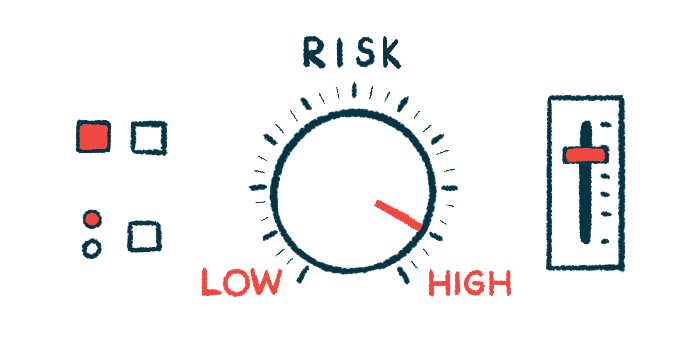Low socioeconomic status tied to worse pediatric NMOSD outcomes
Black pediatric patients had more severe disability two years after diagnosis
Written by |

Children with neuromyelitis optica spectrum disorder (NMOSD) who live in disadvantaged socioeconomic neighborhoods are more likely to have more severe disease-related disabilities, a study in the U.S. indicates.
Two years after a diagnosis, Black pediatric patients had significantly more severe disability, as assessed with the standard Expanded Disability Status Scale (EDSS), and more healthcare resources utilization than white patients.
“Given strong correlations of neighborhood-based socioeconomic risk factors with worse EDSS and the higher prevalence of minority populations living in such at-risk neighborhoods, our study does emphasize the necessity of considering [social determinants of health] as a driver of outcomes when reporting findings based on race and ethnicity,” the researchers wrote. Social determinants of health are the nonmedical factors, such as social and economic factors, that influence health outcomes.
The study, “Racial, Ethnic, and Socioeconomic Disparities in Pediatric Aquaporin-4-Positive Neuromyelitis Optica Spectrum Disorder,” was published in Pediatric Neurology.
NMOSD is a rare autoimmune disease that mainly causes inflammation in the spinal cord, where it’s called transverse myelitis, and in the nerve that relays signals between the brain and the eyes, called optic neuritis. This leads to symptoms such as muscle weakness and problems with vision. The disease is associated in most patients with self-reactive antibodies that target AQP4, a protein at the surface of astrocytes, which are neuron-supporting cells.
Adults and females are most often affected, with pediatric cases accounting for only 5% of all NMOSD patients who test positive for anti-AQP4 antibodies. While pediatric NMOSD patients have clinical signs similar to adults, they tend to take longer to develop motor disability, but are at a higher risk for visual problems.
Sociodemographic characteristics of NMOSD outcomes
U.S. studies show NMOSD is most common among Black women, followed by Asian American women. Among adults with NMOSD, poorer outcomes have been suggested in Black patients.
“With the rarity of pediatric presentation, data on NMOSD in childhood and adolescence are scarce, especially regarding the potential influence of sociodemographic characteristics on clinical outcomes and inequities in those outcomes,” the researchers wrote.
Here, researchers analyzed medical data, insurance status, address, and census tracts from 38 AQP4-related NMOSD patients diagnosed before they turned 18 who were followed at three U.S. pediatric specialized medical centers between 2009 and 2021.
“Census tracts are small, defined subdivisions of a county from which socioeconomic factors can be extracted from inhabitants based on data from the US Census,” the researchers wrote.
The children had a mean age of 11.6 and were mostly girls (84.2%). Most (75.7%) were non-Hispanic Black/African American, while five (13.5%) were Hispanic white and four (10.8%) were non-Hispanic white.
At the onset of the disease, a higher proportion of children (47%) had area postrema syndrome, or uncontrollable nausea, vomiting, or hiccups due to damaging inflammation in a brain region called area postrema on the brainstem, a stalk-like structure at the base of the brain. Also, 39% had transverse myelitis and 34% had optic neuritis. Those with transverse myelitis as the first symptom had a significantly shorter time between the onset of symptoms to diagnosis.
Worse outcomes for Black children after diagnosis
The researchers also analyzed the children’s data two years after diagnosis. More than a third (39.5%) had visual problems, 2.6% had motor difficulties and cognitive disabilities. Those whose first symptoms affected the brainstem (18%) were 2.5 years younger and had significantly fewer relapses per year and significantly less disability, as assessed with the EDSS, than those with all other first symptoms.
Black children with NMOSD were more likely to live in regions with a higher proportion of assisted income and poverty, while Hispanic white children were more likely to live in areas with a higher deprivation index and a higher proportion of the population without health insurance, compared with their white counterparts. A higher deprivation index reflects socioeconomic disadvantages regarding income, education, insurance, employment, and housing quality.
Compared with white children, Black children had significantly higher EDSS scores, indicating worse disability, two years after diagnosis (2.46 vs. 0.33), and tended to have a longer period between symptom onset and diagnosis. Black children also had about twice the hospitalizations and about 28 additional days of inpatient care within the first two years after diagnosis. In turn, they had a significantly longer relapse-free period than white and Hispanic patients (231 vs. 32 vs. 53 days).
Children with public insurance (59.5% of all) had a significantly higher annual rate of relapses than those with private health insurance.
Regarding social determinants of health, children living in census regions with a lower median income, a higher proportion of the population in poverty and receiving assisted income, and a higher deprivation index had significantly more severe disability.
Future studies that follow patients over time and with household-level data, “are needed to dissect the interplay of genetics, structural racism, and social determinants of health so that interventions to optimize care and outcomes for this population may be developed,” the researchers wrote.






